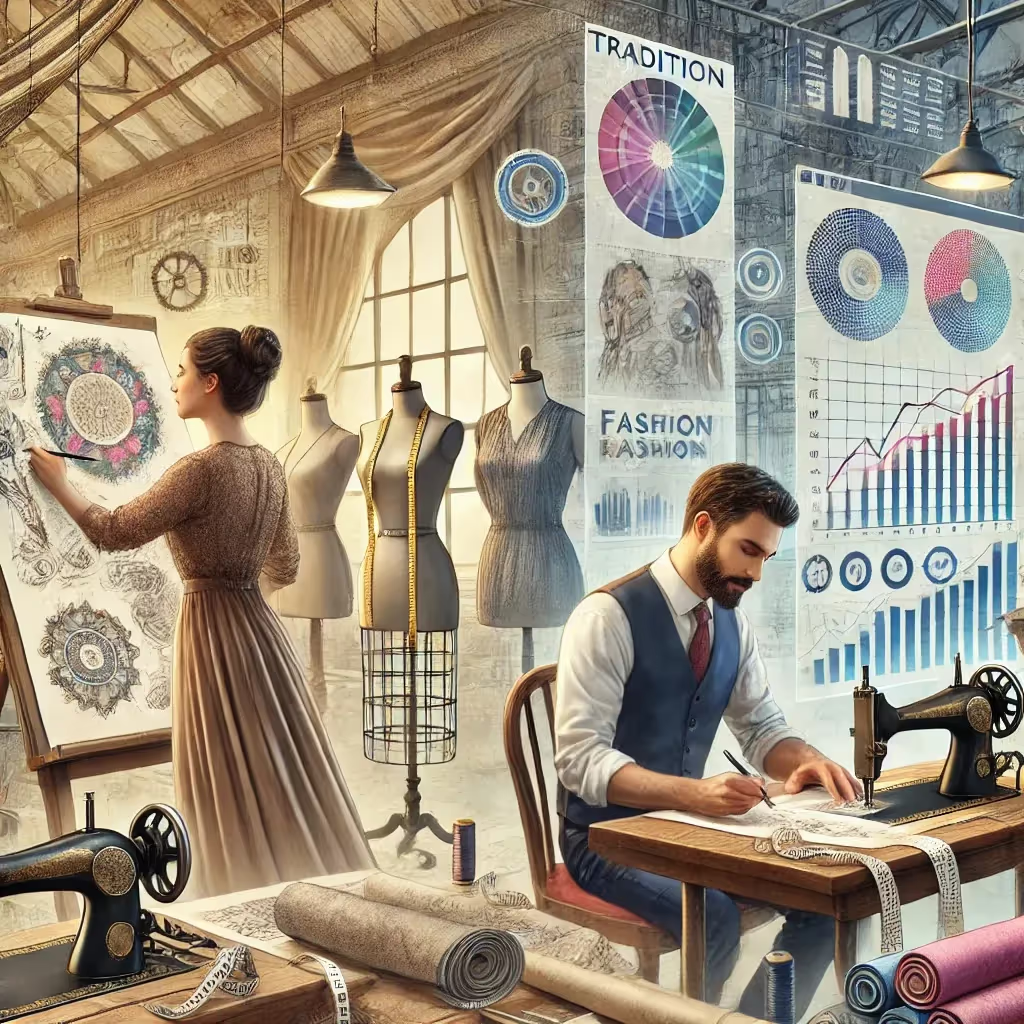In the whirlwind of change that has swept across industries globally, the apparel industry finds itself standing at a crossroads. As both an ancient craft and a cutting-edge business, it has constantly balanced tradition with innovation. Today, however, technology—specifically artificial intelligence (AI)—is no longer an option but a necessity for survival. This journey from tradition to technology is nothing short of amazing, especially as the industry grapples with the aftermath of a global pandemic that exposed its vulnerabilities and forced rapid change.
From Pandemic to AI Renaissance
Let's start with what can only be described as an "aha" moment for the apparel world: the pandemic. The fashion and apparel industries have long relied on intricate supply chains, seasonal collections, and consumer loyalty. But all of that was turned upside down when the world locked down in early 2020. Brands were left staring into a void of uncertainty—shuttered factories, halted deliveries, and shifting consumer priorities. This disruption served as a wake-up call, and the surprising answer for many was AI.
AI had been lurking in the shadows of the industry, often seen as a futuristic tool that might be useful one day. Suddenly, that day had arrived. Brands and manufacturers, reeling from supply chain disruptions, turned to AI-driven tools to manage forecasting, streamline production, and even redesign their entire go-to-market strategies. The sudden surge in adoption wasn’t gradual; it was urgent, necessary, and, for some, surprisingly effective.
The AI Adoption Curve: Accelerating at Top Speed
Once brands dipped their toes into AI, the pace of adoption quickly became astonishing. AI moved from being a nice-to-have feature to an absolute essential in record time. In an industry known for its adherence to traditions—where designers once relied on instinct, historical data, and the latest runway shows to predict trends—suddenly, sophisticated algorithms were spitting out insights faster than anyone could have anticipated.
One of the most critical issues faced as a result of the pandemic was the inability to accurately forecast apparel demand. Sudden changes in consumer behaviour, such as the spike in demand for casual wear and the sharp decline in formal attire—rendered traditional forecasting models obsolete. Enter artificial intelligence (AI), a game-changer in navigating these turbulent waters. AI-driven forecasting tools quickly became indispensable as they analyzed vast amounts of real-time data to predict emerging trends and consumer preferences. By leveraging machine learning algorithms, brands could react swiftly to shifts in demand, reducing overproduction and minimizing losses due to unsold stock.
Inventory management, another major pain point during the pandemic, also saw a significant improvement through AI adoption. With factories operating irregularly and supply chains in disarray, managing stock became a complex balancing act. AI solutions helped optimize inventory management by using predictive analytics to ensure the right products were stocked in the right locations at the right time. This not only prevented overstocking but also mitigated the risk of running out of high-demand items, which was critical during the supply chain disruptions. By analyzing both historical sales data and current market conditions, AI could forecast inventory needs more accurately than traditional methods, allowing brands to adapt to rapidly changing circumstances.
In efforts to keep up with the newly evolving consumer landscape, AI also provided a much-needed edge in understanding and predicting customer preferences during such volatile times. With consumer behaviours shifting daily—whether due to economic pressures or lifestyle changes—brands needed to connect with their audiences on a more personal level to maintain loyalty. AI-driven personalization tools enabled brands to predict individual customer preferences with remarkable accuracy, offering tailored recommendations based on past behaviours, real-time data, and emerging trends. This level of precision allowed brands to provide highly relevant products to their customers, driving sales even in a reduced consumer market.
Successes, Failures, and Surprising Lessons
As with any rapid technological revolution, the apparel industry’s adoption of AI tools hasn’t been without its stumbles. Let’s look at the wins first. Brands that leveraged AI in their supply chains reported up to a 50% reduction in forecasting errors, as per a McKinsey report. Fast fashion giants like Zara and H&M, notorious for their quick turnarounds, now use AI to predict consumer preferences and tweak designs before they even hit the stores. This significantly minimizes waste and ensures that clothing lines resonate with the buying public.
But there have been missteps too. Some companies, in their eagerness to adopt, fell victim to the shiny new object syndrome—investing heavily in AI tools without a clear strategy. Implementing AI without fully understanding the data it requires or without trained personnel to manage it can be a costly mistake. Others found that the cultural shift required to move from human-led decision-making to data-driven approaches led to internal friction, with teams feeling sidelined or overwhelmed.
AI tools thrive on data. For manufacturers to successfully implement AI for forecasting and production, they needed vast amounts of clean, structured, and relevant data. However, many apparel companies—especially those that had been around for decades—lacked the organized data required for AI to function optimally. Data was often siloed across various departments (design, sales, supply chain), stored in outdated formats, or incomplete. Cleaning and integrating this data proved to be a major hurdle.
For trend forecasting, in particular, AI relies on real-time data from multiple sources such as social media, online sales, and consumer behaviour insights. Many manufacturers were not used to collecting or analyzing this kind of data on such a granular level. The challenge wasn’t just about having enough data but ensuring that it was accurate, updated, and relevant. Without high-quality data, AI algorithms struggle to generate reliable insights, leading to inaccurate forecasts and inefficient production planning.
The adoption of AI also requires significant upfront investment, both in terms of technology and personnel. Implementing AI systems requires new hardware, software, and IT infrastructure that can support machine learning and data analytics. Manufacturers need to allocate substantial financial resources to ensure they have the necessary computing power data storage, and specialized staff to manage these systems.
Moreover, AI adoption demands ongoing maintenance and optimization. Many manufacturers underestimated the costs of continuously feeding data into AI systems and refining algorithms over time. Without regular updates and fine-tuning, the AI tools will quickly become obsolete or deliver suboptimal results. This can add to the financial burden, particularly for smaller manufacturers that are already struggling with thin margins.
AI can process vast amounts of data to identify trends and make predictions, but fashion is also influenced by cultural movements, artistic vision, and emotional appeal—elements that are hard for algorithms to capture.
Some manufacturers still face difficulties in ensuring that AI doesn't overshadow the human element in fashion design. AI can suggest that a certain colour or style is trending based on data, but it can’t always predict the next big cultural shift or viral moment that might influence future trends. As a result, manufacturers have to find ways to integrate AI insights with human creativity, using data to inform but not dictate the design process.
The Future of Fashion
The journey from tradition to technology isn’t always smooth, but it’s undeniably fascinating. Apparel brands that can embrace AI while maintaining their unique voice will emerge stronger, smarter, and more resilient. The key is finding the right balance—leveraging AI’s power without losing the creativity, innovation, and human touch that have always made fashion so much more than just clothing.
AI isn't just replacing human intuition; it's enhancing it. It’s offering data-backed decisions on trend forecasting, allowing brands to react in real-time to global market shifts. Whether it’s optimizing inventory management or designing sustainable supply chains, AI has become a new kind of thread stitching the entire industry together.




